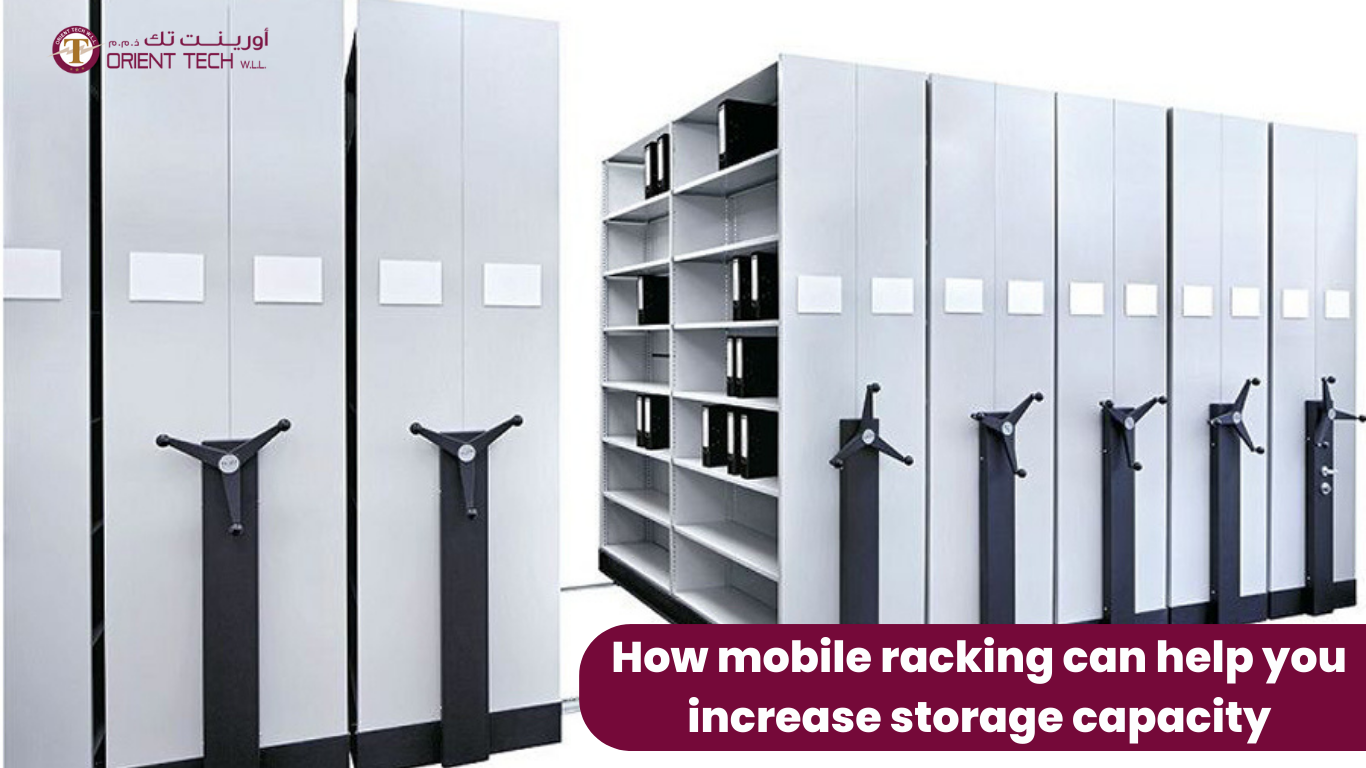In today’s fast-paced business world, optimizing storage capacity is essential for efficiency and profitability. Warehouses, distribution centers, and various industries that rely on storage facilities are constantly seeking innovative solutions to make the most of their available space. Mobile racking systems have emerged as a game-changer in this regard, providing a versatile and efficient solution to significantly increase storage capacity while maintaining accessibility. In this blog, we’ll explore how mobile racking can help you maximize your storage space.
Understanding Mobile Racking Systems
Mobile racking, also known as compact storage or high-density storage, is a high-capacity shelving system that utilizes movable racks to condense storage space. Unlike traditional static shelving, mobile racking systems feature mounted racks on wheels or rails, which can be moved horizontally to open up a single access aisle. This design eliminates the need for multiple fixed aisles, ultimately increasing storage density within the same footprint.
Key Advantages of Mobile Racking:
1. Optimized Space Utilization:
The primary advantage of mobile racking systems is the ability to make the most of available space. By reducing the number of access aisles required, you can store more items in the same area. This can be particularly beneficial for businesses operating in limited space environments or those looking to reduce their warehousing costs.
2. Enhanced Storage Capacity:
Mobile racking allows for greater storage capacity compared to traditional storage systems. With fewer aisles and a more organized layout, you can significantly increase your storage potential. This is especially beneficial for companies dealing with seasonal inventory fluctuations or expanding product lines.
3. Improved Accessibility:
Mobile racking systems maintain easy accessibility to stored items. These systems are designed to ensure that, despite the reduced number of aisles, you can still quickly and safely reach the items you need. This is vital for businesses that require efficient inventory management and frequent product retrieval.
4. Cost-Efficiency:
While the initial investment in mobile racking may be higher than conventional storage systems, the long-term cost savings are significant. The ability to store more in less space reduces the need for additional facilities, which can be costly in terms of construction, maintenance, and operational expenses.
5. Customization Options:
Mobile racking systems can be tailored to suit your specific needs. They are available in various sizes, configurations, and weight-bearing capacities, making them suitable for a wide range of industries. This adaptability ensures that the system can be integrated seamlessly into your existing storage infrastructure.
6. Enhanced Safety and Security:
Mobile racking systems often come equipped with safety features, such as sensors and locking mechanisms, to prevent accidents and unauthorized access. This helps protect both your inventory and your employees, contributing to a safer working environment.
Applications of Mobile Racking Systems:
Mobile racking systems are versatile and can be employed across various industries, such as:
1. Retail and Warehousing: Businesses that rely on warehousing and distribution, including e-commerce, benefit from the increased storage capacity and easy access provided by mobile racking systems.
2. Pharmaceuticals and Healthcare: Mobile racking is ideal for storing medical supplies and pharmaceuticals, where space optimization and quick retrieval are crucial.
3. Manufacturing: Manufacturing plants use mobile racking to store raw materials, work-in-progress, and finished goods efficiently.
4. Archives and Libraries: Mobile racking is valuable in preserving and accessing historical records, books, and documents, as it maximizes storage space without compromising accessibility.
5. Automotive Industry: Auto parts manufacturers and distributors utilize mobile racking systems to store and organize components, improving their inventory management.
Considerations for Implementing Mobile Racking Systems:
Before implementing mobile racking in your storage facility, there are several key considerations to keep in mind:
1. Available Space: Assess your available space and layout to determine how mobile racking can be integrated effectively. It’s essential to have the space for the movement of the racks.
2. Inventory Needs: Consider the nature of your inventory, including size, weight, and accessibility requirements. Different types of mobile racking systems are suitable for different applications.
3. Safety Regulations:Ensure that your mobile racking system adheres to safety standards and guidelines to protect both your employees and inventory.
4. Budget: While mobile racking systems offer long-term cost savings, the initial investment can be significant. Determine your budget and financing options.
5. Maintenance: Regular maintenance and inspections are essential to keep the system running smoothly and safely.
Conclusion
Mobile racking systems offer a strategic and efficient solution for businesses seeking to maximize their storage capacity. By optimizing space utilization, enhancing accessibility, and reducing operational costs, mobile racking can be a valuable addition to various industries, from retail and warehousing to healthcare and manufacturing. When considering the implementation of mobile racking, it’s essential to carefully assess your specific needs and available space, adhere to safety regulations, and plan for maintenance to ensure the system’s long-term success. With mobile racking, you can effectively address your storage challenges and create a more streamlined and efficient storage environment for your business.
 +974 55641343
+974 55641343 
 +974 4451 2997
+974 4451 2997
